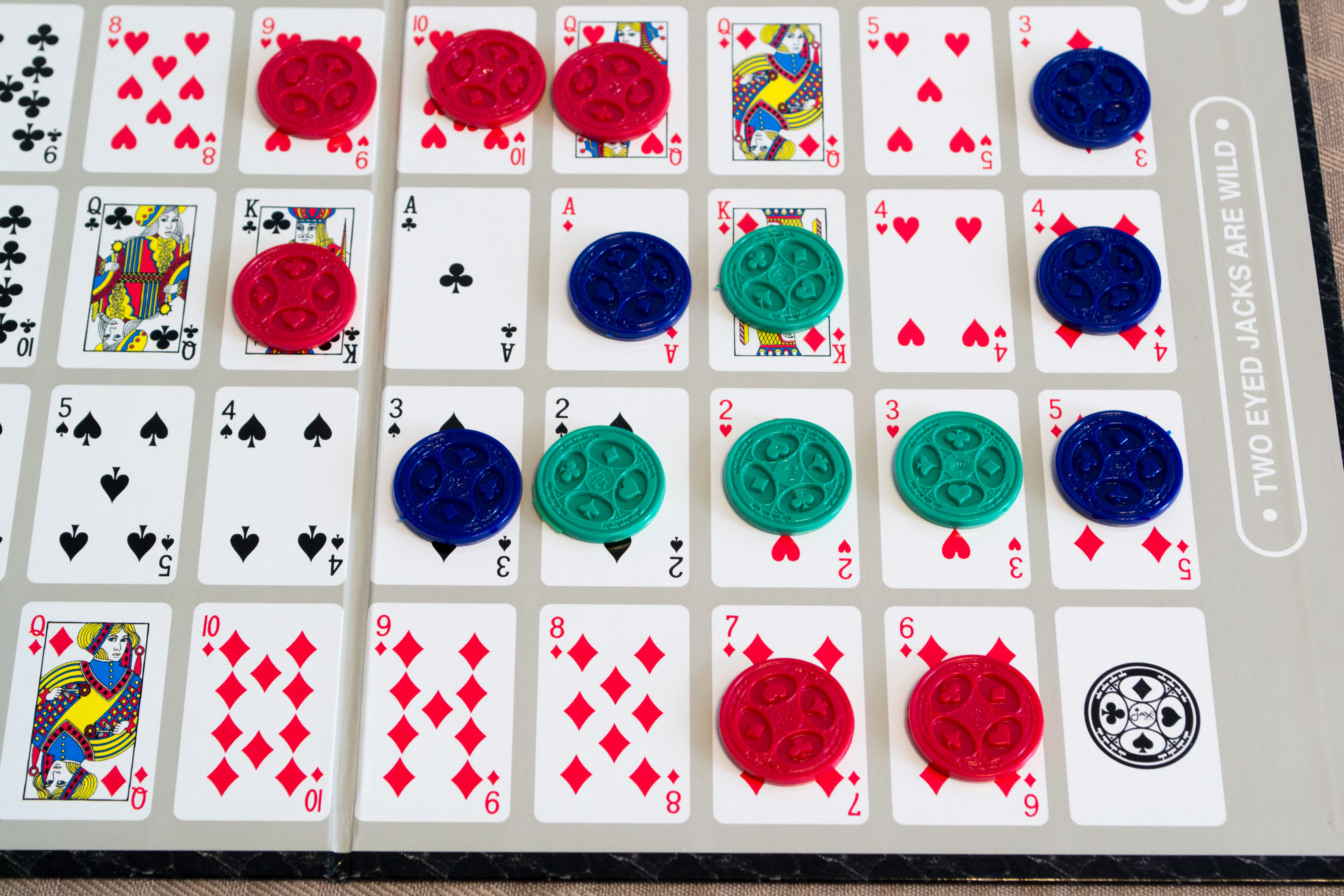
One-Eyed Jacks allow whoever played one to remove an opponent's chip from a space. Two-Eyed Jacks are considered wild cards and may be used to place a chip on any open space on the board. On their turn, the player chooses a card from their hand to play, then places a marker chip on one of the corresponding spaces of the game board (Example: An Ace of Diamonds is played from a player's hand that player places a chip on the Ace of Diamonds on the board). The player to the left of the dealer goes first.
Sequences card game full#
Playing Board 19 + 3⁄ 4 by 15 + 1⁄ 4 inches (500 mm × 390 mm) Instructions 135 poker chips (50 blue, 50 green, 35 red) two full standard card decks (52 cards each, 104 cards total may also contain jokers). The object of the game is to form a row of five poker chips, called a sequence, on the board by placing the chips on the board spaces corresponding to cards played from the player's hand. Doug Reuter is acknowledged as the inventor of Sequence on all newly produced copies of the game - both on the box and in the printed rules. In 2017, Goliath Game Company bought Jax, and in early 2018 also bought all licensor rights and now owns 100% of the game Sequence.

The game was first sold in a retail store in 1982.
Sequences card game license#
an exclusive license to manufacture, distribute and sell the board game Sequence and its subsequent variations. He spent years developing the concept, and, in June 1981, granted Jax Ltd. They originally called the game Sequence Five. Sequence was invented by Douglas Reuter and Hamish.

Sequence is an abstract strategy tabletop party game. For the video game also known as Sequence, see Before the Echo.


 0 kommentar(er)
0 kommentar(er)
